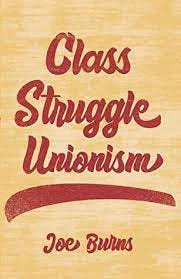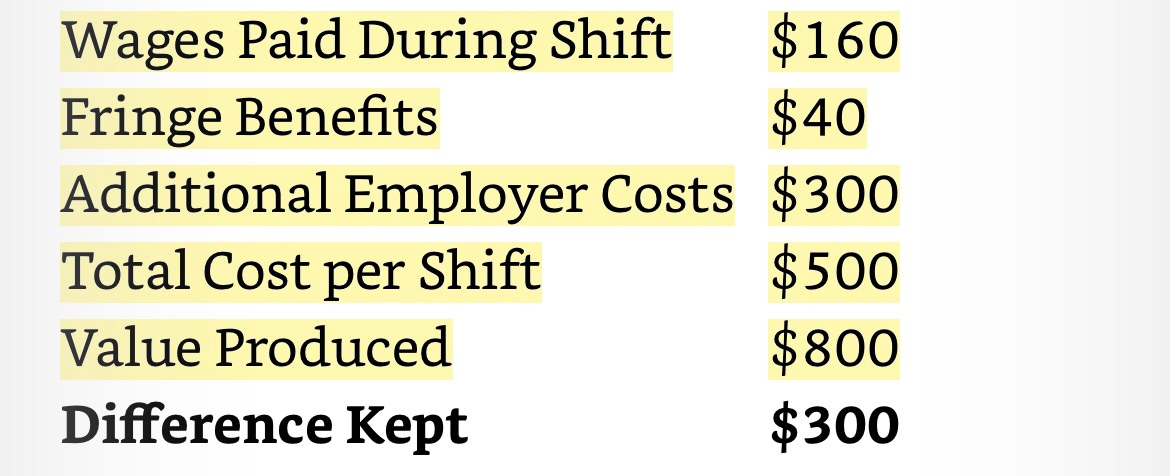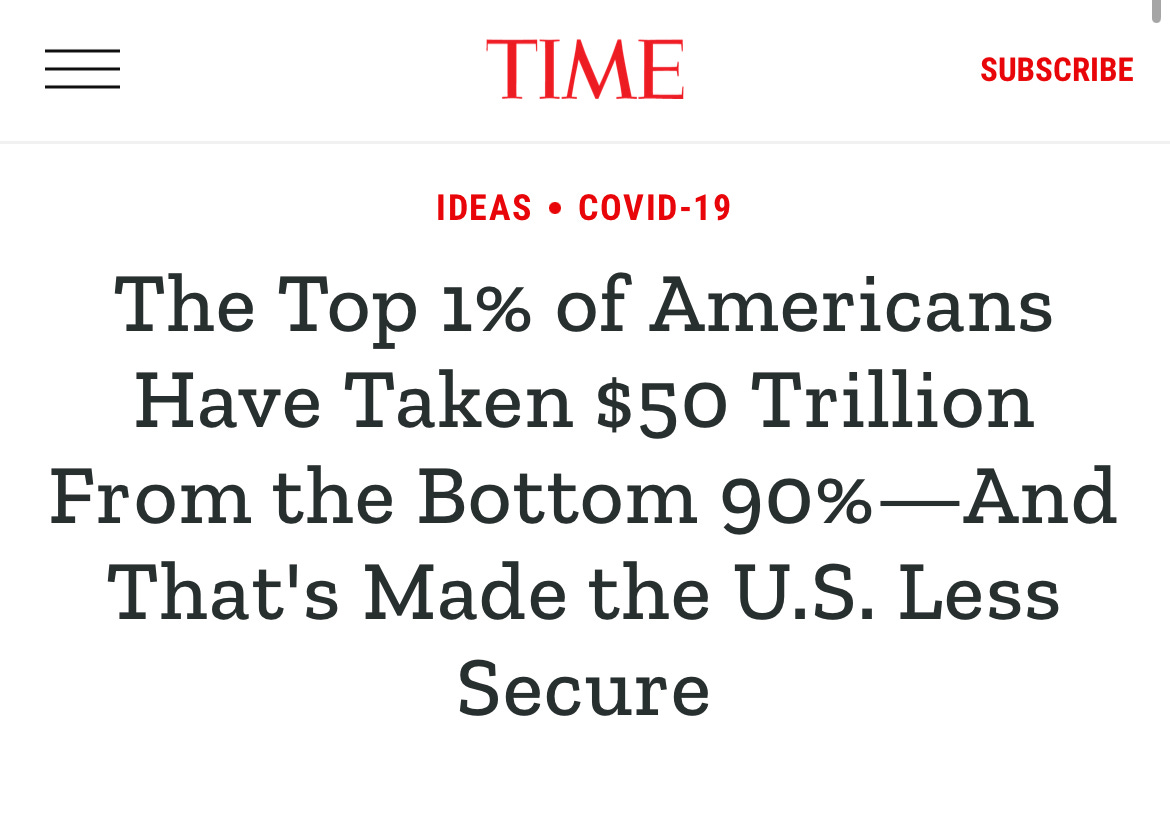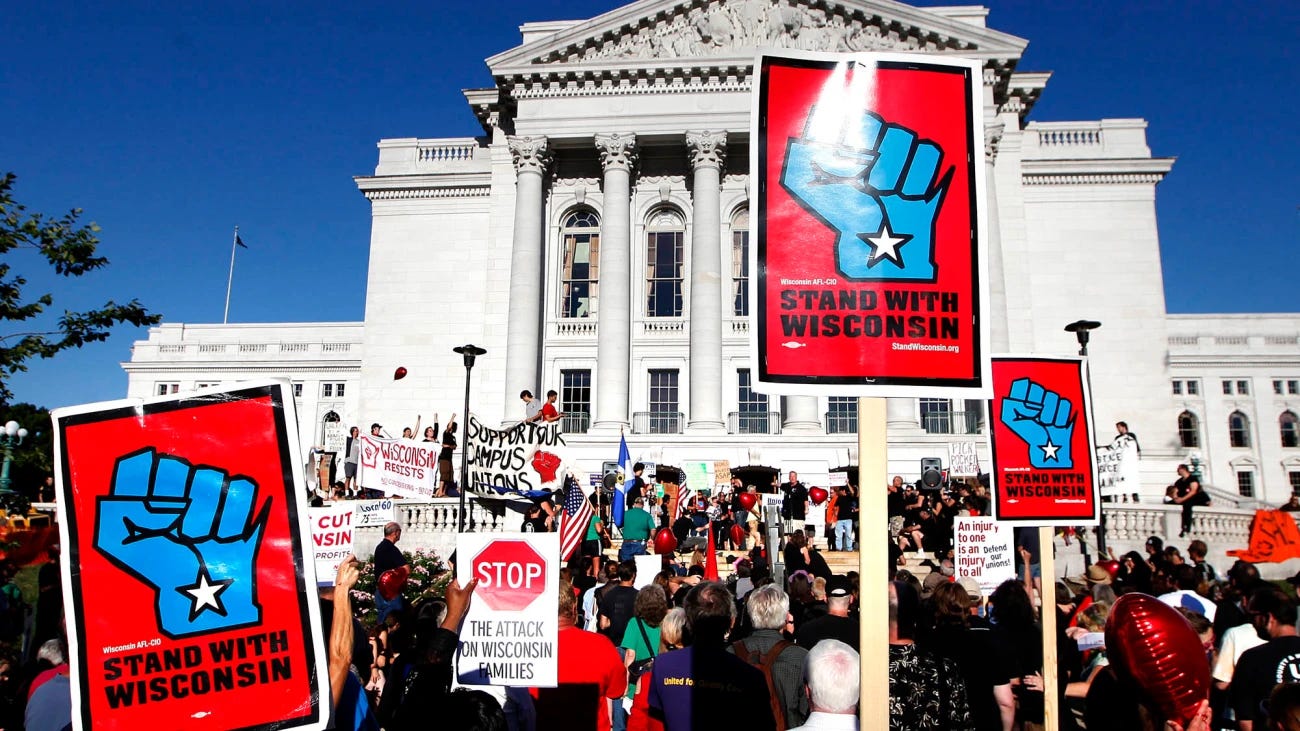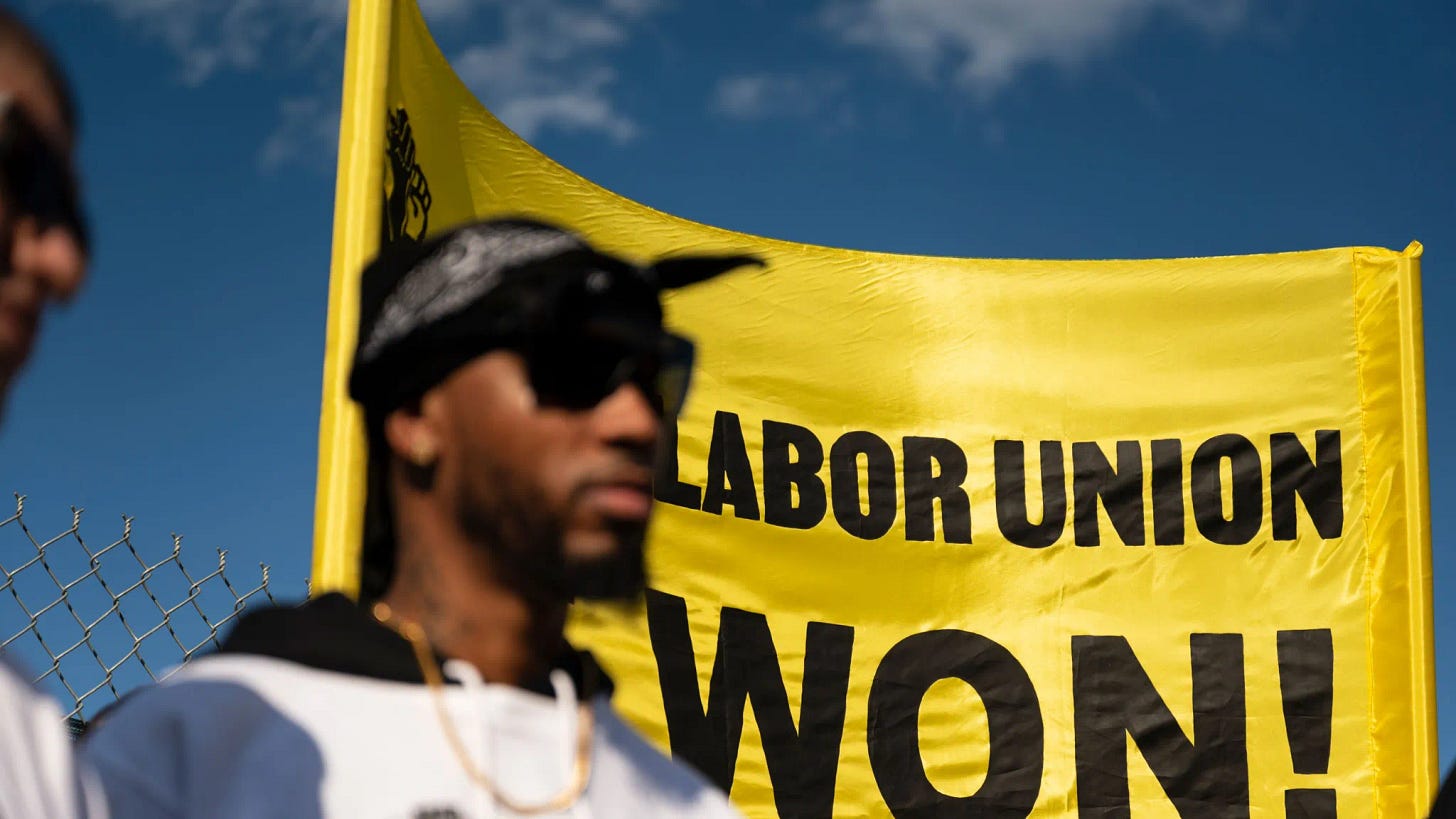We’re reading a book on this account. It’s Class Struggle Unionism by Joe Burns.
To recap chapter one, we defined the working class. The working class has to sell its labor to survive. The owning class survives and thrives from the labor of others.
It’s the formula for how you’re being screwed and it looks like this:
Say you work a shift. Add up all the costs to your employer. Call it $500. The products you made sell for $800. The $300 difference, that value you magically created by working, is not kept by you, it’s kept by the owning class who did none of the work.
That’s called the wage transaction. Apply it across every employer, especially the big ones in America, and it accounts for 50 trillion dollars of value moving from the American working class to the American owning class.
Chapter 2: Class Struggle Union Ideas.
“It is the natural right of all labor to own and enjoy the wealth created by it”
This sentence, written into the early 1930s by-laws of Teamsters Local 574 in Minneapolis sums up the difference between class struggle thinking and corporate thinking.
Class struggle thinking says that:
Workers create all wealth, and workers themselves should own that wealth.
Power and control should go to the workers.
What happens to one working person matters to another. We’re all parts of the same working-class body.
Pro corporate thinking says that:
All wealth is created by business, and a handful of people should own the wealth.
Power and control should go to the owners and billionaires
Every man for themselves. One person's success depends on another person’s failure.
Chapter two applies those differences to unions themselves. There are class struggle unions and pro-business unions. And the latter has dominated the labor movement since the 70s, as it’s declined to the historic lows of today.
Class struggle unions fight the interests of owners and billionaires. Business unions collaborate with the owning class.
Class warriors fight for power and control over the workplace. Business unions narrowly fight for wages and benefits and make concessions to keep the peace.
Class struggle unions are worker-led and grassroots. Business unions emphasize professional staff and top-down organizing imposed on the workplace.
The last 50 years in America have been full-throttle corporate domination, and it got a hall pass from too many business unions. Workers created the wealth, and most of it went to people you can count on one hand.
And those people bought our political system with the money that you made.
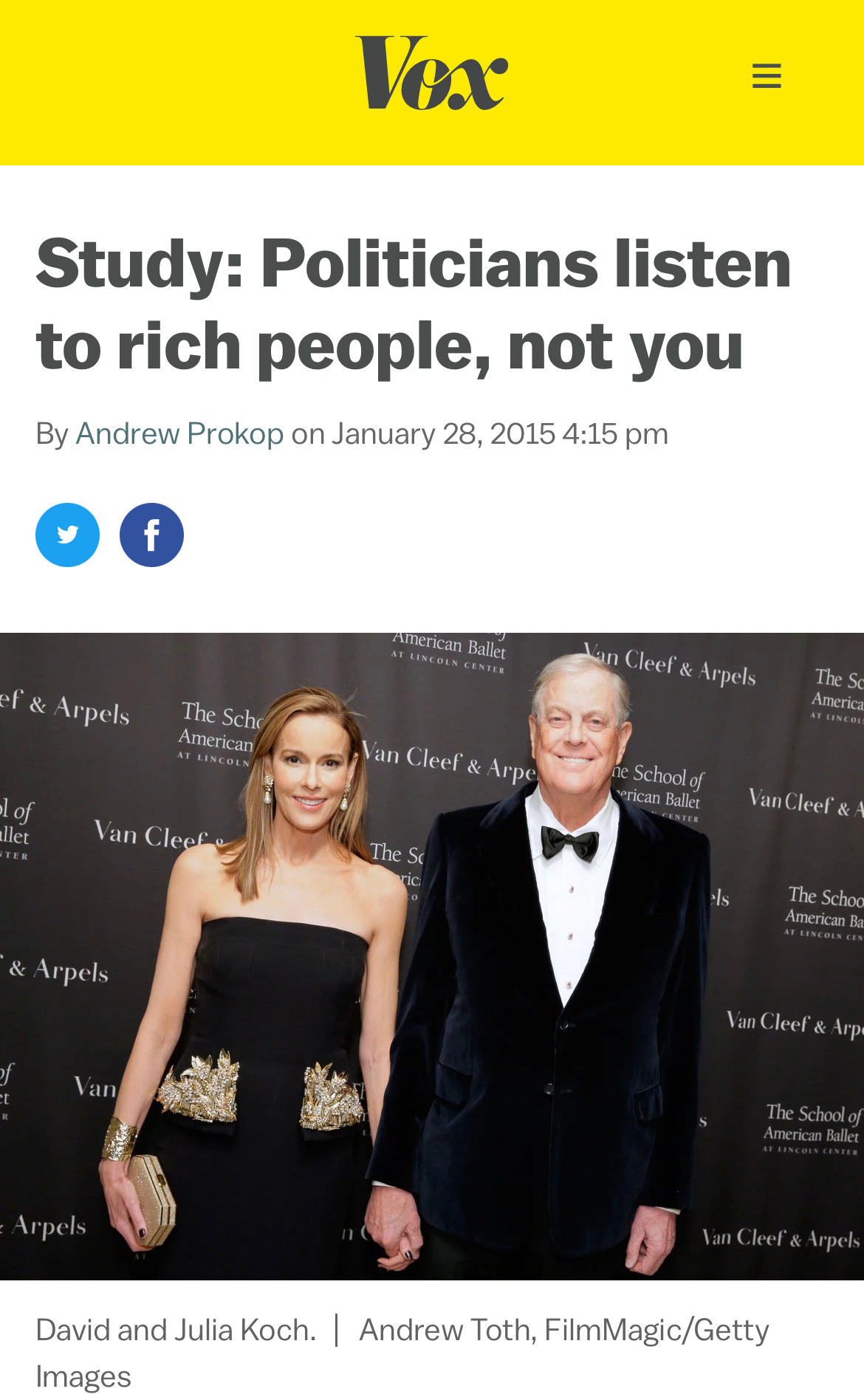
But, the class warriors are on the rise. Pubic employees stuck it to Scott Walker in Wisconsin in 2011.
Teachers in deep-red West Virginia struck back in 2018.
And just this year, the completely independent Amazon Labor Union landed the biggest whale of all with a folding table and a Go-Fund-Me account.
The same old rule is true. The people, united, will never be defeated. Stay tuned for chapter three.


